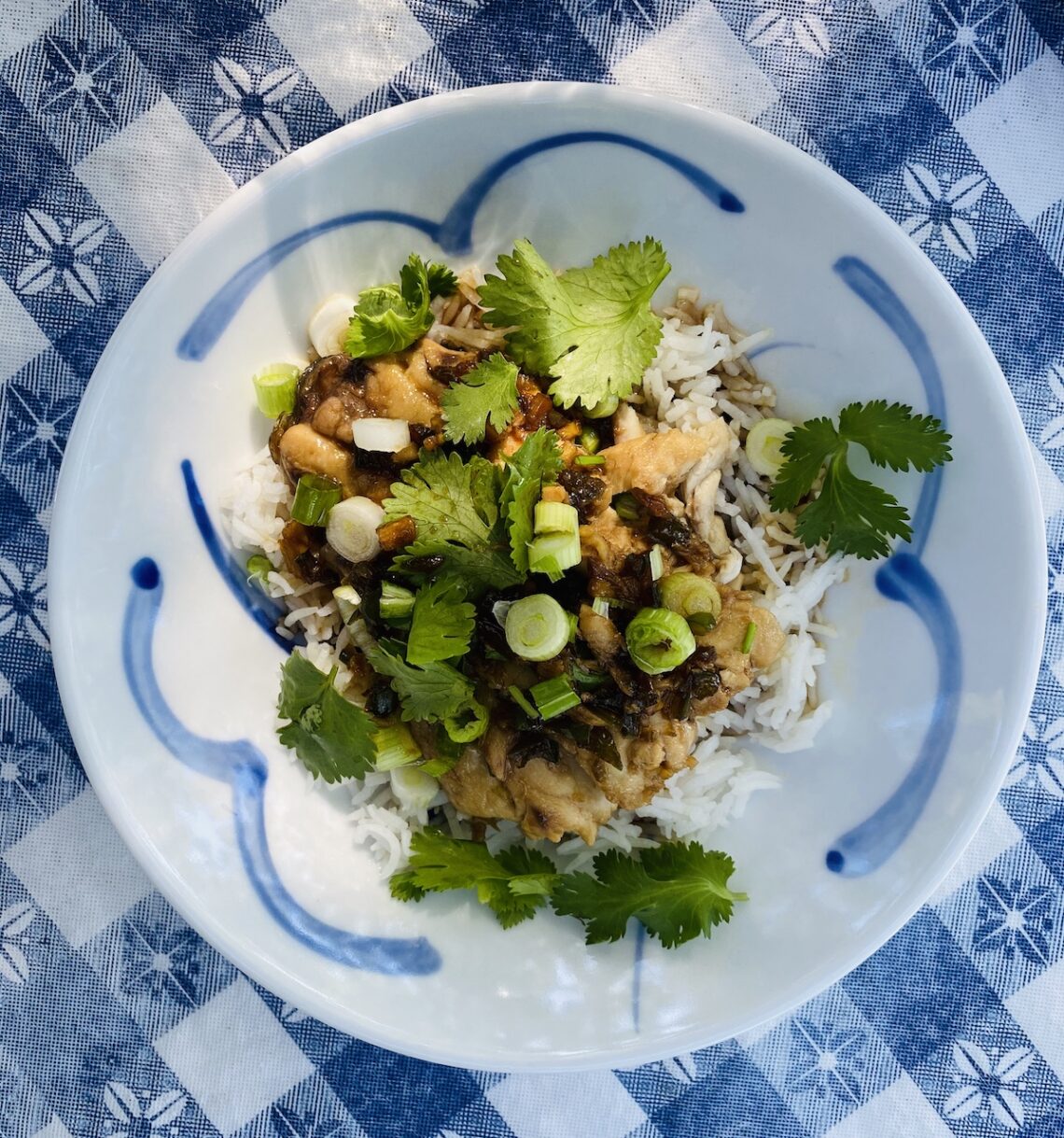
Vietnamese-Inspired Caramel Bluefish
This year, as the weather gets chillier, it’s more difficult than usual to welcome the fall. This fall doesn’t feel like a new start, as the fall often does, but instead feels like the beginning of a more difficult period of the pandemic, when gathering outside becomes less and less of an option. And so, even though it’s almost October, I’m posting a recipe about bluefish, a fish that conjures up images of summer and grilling and allows me to hold on to summer for one more moment.
There are so many ways to cook bluefish. You can marinate it and grill it. (A marinade of olive oil, balsamic vinegar, honey, and mustard, plus salt and pepper, is easy and delicious.) You can wrap it in aluminum foil and either cook it over the grill or in the oven, and then enjoy the soft and flaky meat, which turns almost white. You can eat smoked bluefish on crackers or as a pate. The world of bluefish is large and should be cherished. This recipe, from Melissa Clark, is cooked on the stove. It’s simple and can be made on a rainy day when you don’t want to go outside to grill. You just add everything to a pan, cook the fish in the sauce, and serve it. (You can also use other fish like salmon and mackerel for this dish.)
Unsurprisingly, this post discusses the main ingredient in this meal: bluefish. If you aren’t from the East Coast, you might not know much about bluefish. It’s a medium-sized fish, on average about 30 centimeters (about 12 inches), with scales and meat that have a blueish tint. Some people find the blue of the meat off-putting, but the fish is delicious. (It’s much better fresh, as it can become a bit oily after a few days.)
Bluefish are a migratory seasonal fish, found on the East Coast from Maine to Florida. They arrive in New England around May and stay through September. Most bluefish – 70 percent – are caught recreationally, not by professional fishermen. Bluefish are hard to catch, which make them a good sport fish. They put up a fight, even after being hooked, and have very sharp teeth. Bluefish have intense eating habits. Called the “bluefish blitz,” large schools of fish “attack bait fish near the surface, churning the water like a washing machine.” Writing in 1871 about this feeding behavior, a scientist explained:
“Going in large schools, in pursuit of fish not much inferior to themselves in size, they move along like a pack of hungry wolves, destroying everything before them. Their trail is marked by fragments of fish and by the stain of blood in the sea, as where the fish is too large to be swallowed entire, the hinder portion will be bitten off and the anterior part allowed to float away or sink.”
Despite their fierceness, bluefish populations have decreased in the last couple of years. Although professional fishermen rarely fish for bluefish and recreational fishermen almost never catch up to the quota limit, the numbers are down. Some believe that bluefish populations are cyclical, that they come and go. Bluefish spawn offshore and if the conditions aren’t correct, it appears that there can be a decrease in the population. But others think that the dip in population is from overfishing. Let’s hope that this is just a cycle and that the bluefish will be back soon.
Vietnamese-Inspired Caramel Bluefish
Course: Dinner, Recipe4
servings20
minutesAdapted from Melissa Clark’s Fast Vietnamese Caramel Bluefish
Ingredients
1 pound of bluefish fillets, with the skin on (you can also use thin salmon, mackerel, or any other strong-flavored fish)
1 tablespoon olive or peanut oil
1 strip of the zest of a lime
¼ cup brown sugar
2 tablespoons fish sauce
1 ½ tablespoons soy sauce
1 teaspoon ginger, minced
½ jalapeño, minced (with or without seeds, depending on taste)
4-6 scallions, sliced
½ cup fresh cilantro, roughly chopped
Directions
- Oil the fish on both sides.
- Add the zest of a lime, the brown sugar, fish sauce, soy sauce, ginger, and jalapeño to a medium-sized sauce pan. Cook over medium heat for about 3 minutes, until the sauce is gently simmering and the brown sugar has dissolved.
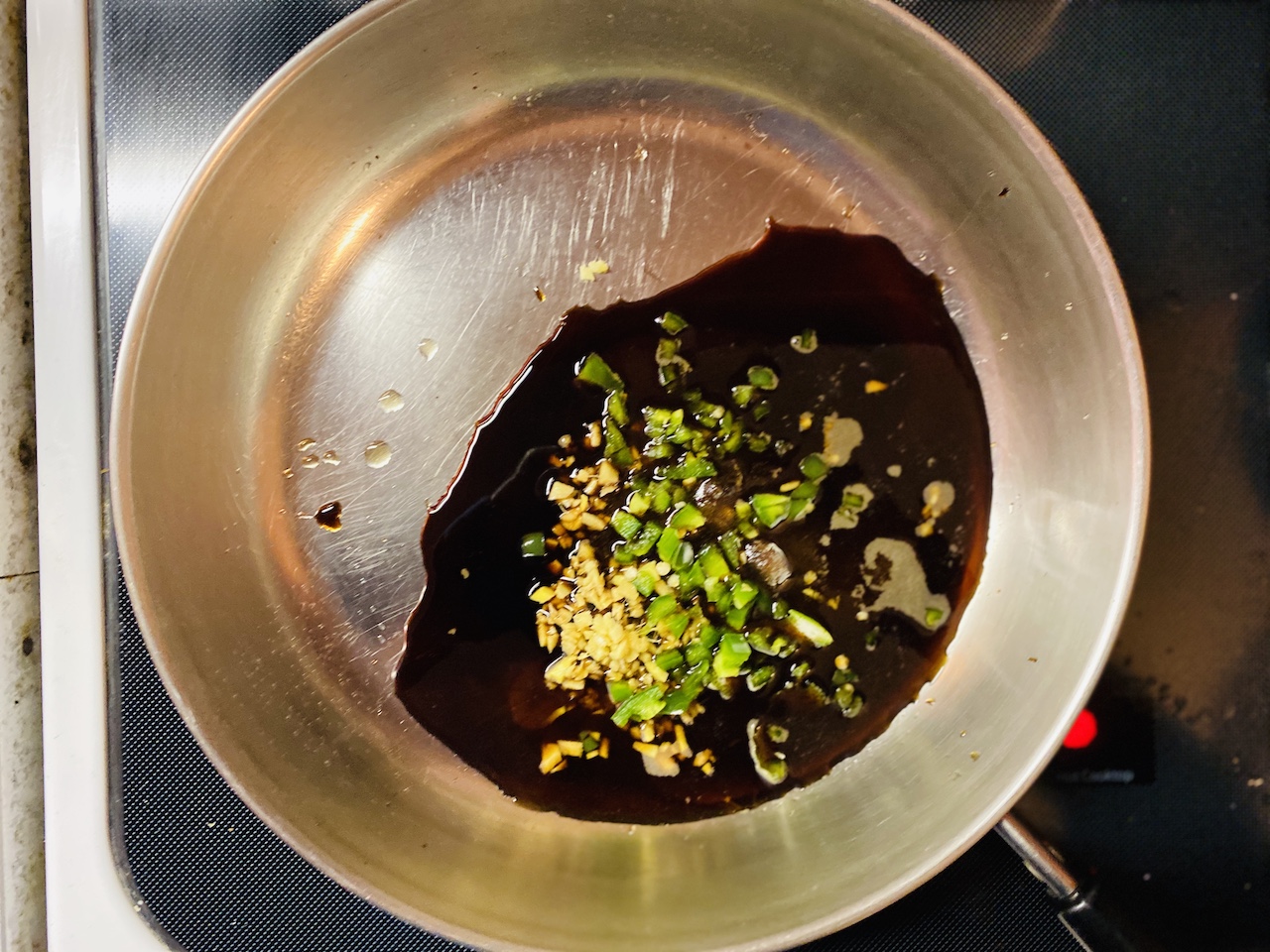
- Add the fish to the pan, skin side down, and cook for about 3 minutes. Flip each piece and cook for another 2-3 minutes. (Depending on how thick the fillets are, it may take slightly longer or shorter.) The fish is done when it is white and flaky.
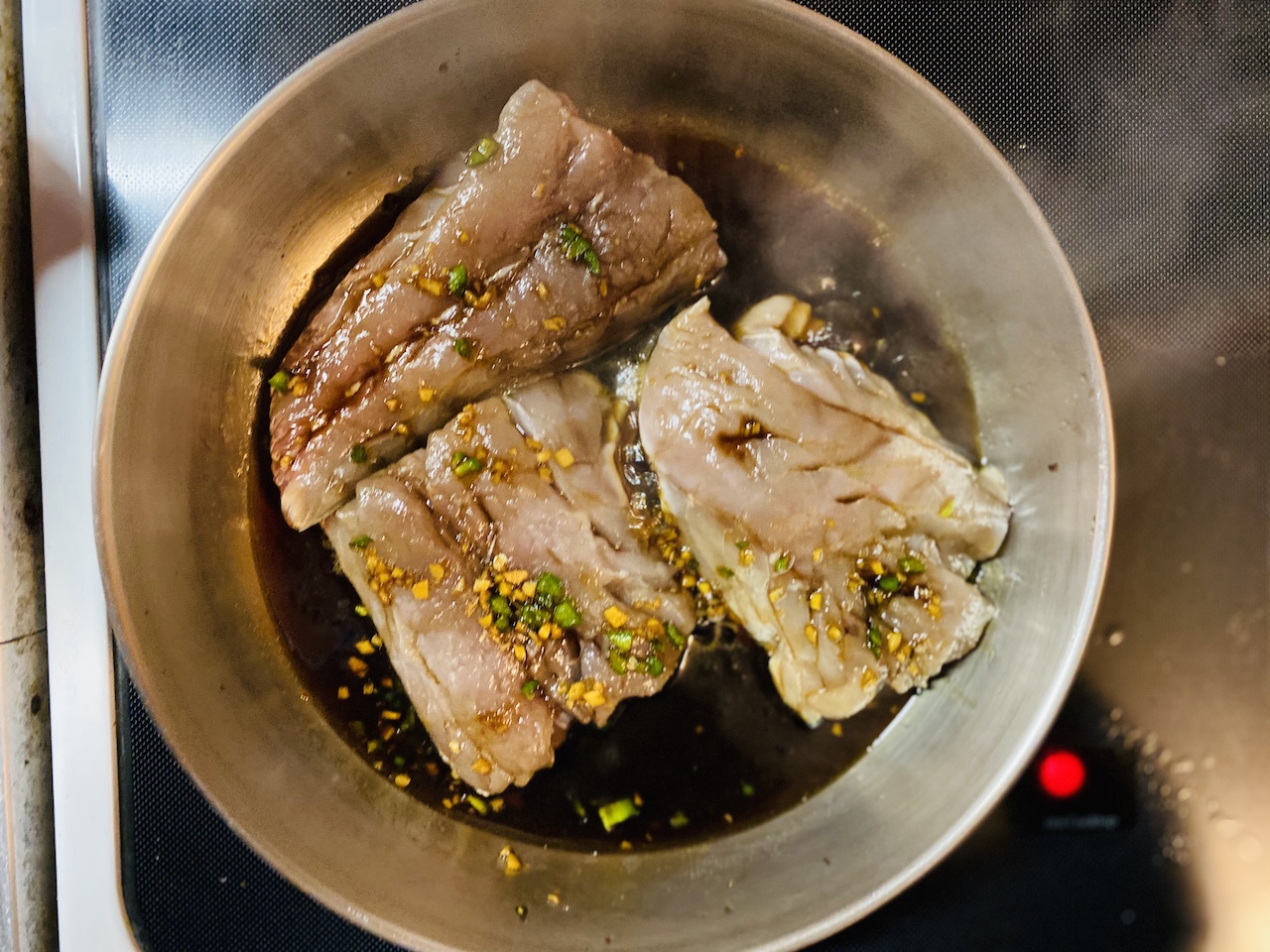
- Garnish the fish with scallions and cilantro and serve over rice.
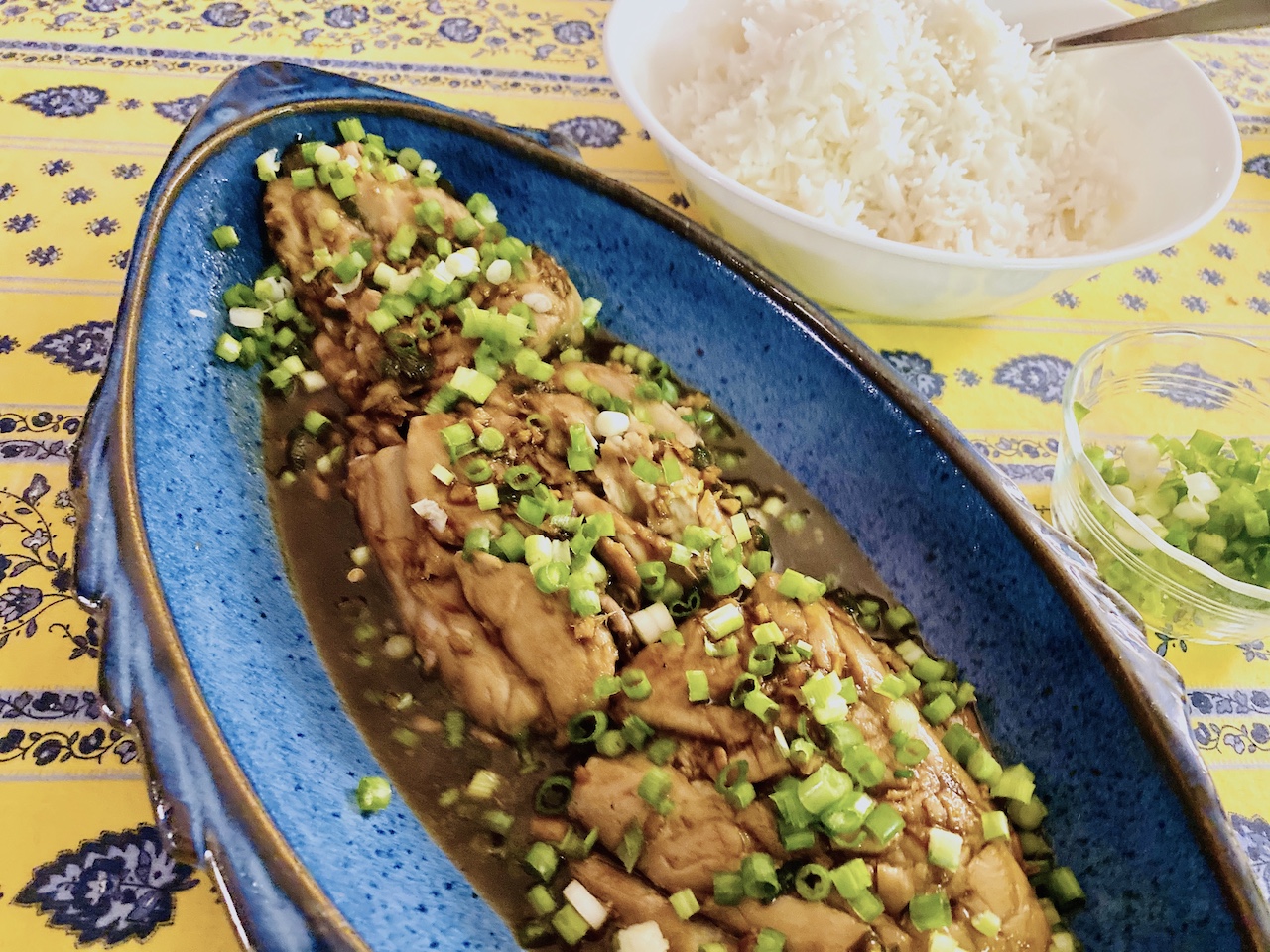


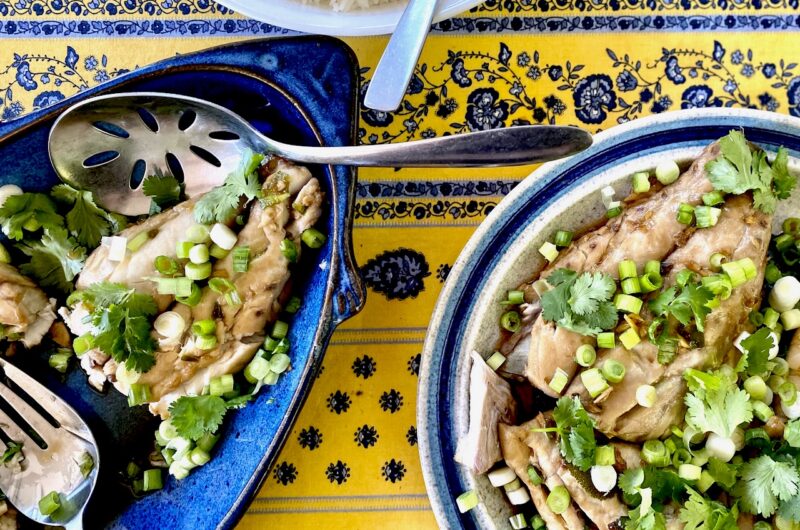
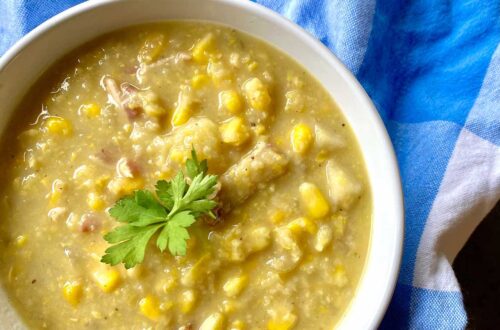
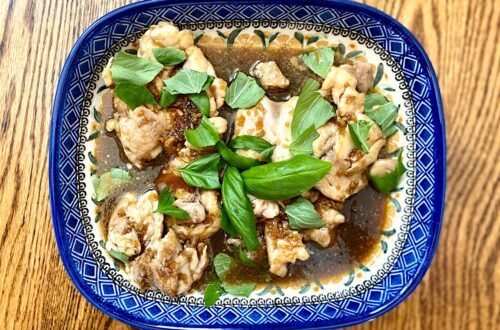
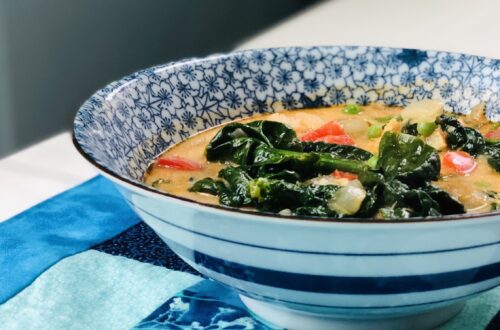
6 Comments
Amalia
How essential is the jalapeno? Would red pepper flakes as a substitute work?
Bites & Rights
I bet red pepper flakes would work!
Avis
Never had bluefish and I live in Maine! Recipe sounds great!
Bites & Rights
Thanks, Avis!
Charity
I don’t even know about bluefish. Is this something you can get at regular grocery stores in the midwest?
Bites & Rights
Unfortunately, probably not. But you can use sea bass or striped bass (which Whole Foods has recently had) instead.